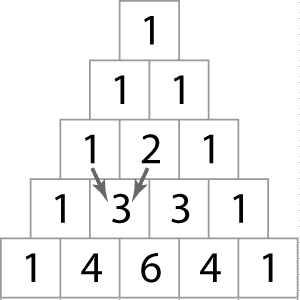Just a few questions to check your math skills.
1-24. Calculate the factorial of 7.
(A) 28
(B) 720
(C) 5,040
(D) 40,320
1-25. Using Pascal’s triangle allows one to determine which terms of the binomial expansion?
(A) coefficients
(B) exponents
(C) higher order terms
(D) permutations
1-56. Identify which the following Boolean algebra expressions is correct.
(A) 1 + 0 = 1
(B) 1 + 1 = 2
(C) 1 − 0 = 0
(D) 1 − 1 = 0

Hi Fred,
There is no complete button here.
Best,
Yuan
Hi Yuan, the buttons are now added – thanks for letting me know. Cheers, Fred